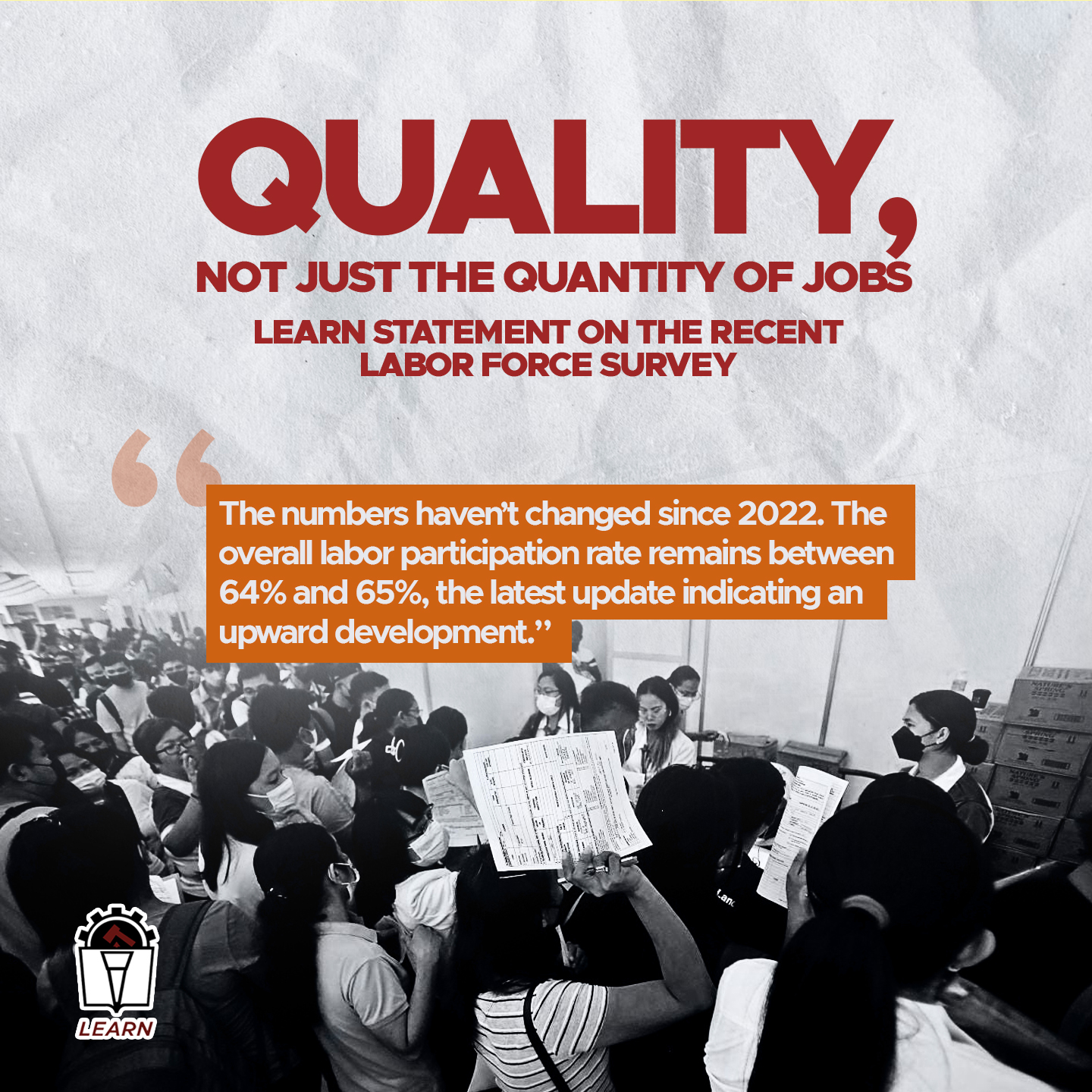According to recent government statistics, the unemployment rate in the country had dropped from 2.59 million in July to 2.03 million this August. Normally, we would warmly greet a reduction in unemployment. However, given the multitude of issues faced by Filipino workers, including the Philippines being among the top ten worst countries for workers in 2025, we must look at the statistics critically.

Looking at data from August of the previous year, the data points to little to no significant change in the national situation. The numbers haven’t changed since 2022. The overall labor participation rate hovers between 64% and 65% for the past three years, the latest update indicating an upward development. Overall unemployment and underemployment seem to have decreased as well. However, is the overall government policy on employment really delivering good, quality, and secure jobs for Filipinos?
Focusing on youth employment, the data does point to a quantitative increase in jobs. But qualitatively, the quality of available jobs are problematic. Many young people who have just entered the workforce feel that they do not earn enough to sustain themselves and their families, which is illustrated by a higher youth underemployment rate compared to last year.
As trade unions have repeatedly emphasized, chronic underemployment suggests that workers need multiple jobs to survive. This is supported by the fact that minimum wages fall far below the poverty threshold.
With the lack of systemic reforms on industrial relations and worker’s rights, it is highly questionable whether or not there are actual, tangible improvements for working people. Contractualization still remains a rampant practice across industries, leaving workers perpetually vulnerable. Although women’s participation rate has increased, there still exists a 20% gap between them and men. The statistics also do not reflect the additional burden of care work that women do at home, which affects their socioeconomic independence.
To remedy these issues, the government must design a comprehensive industrial and employment policy that would prioritise the wellbeing of the working class. Statistics and numbers may provide a rosy picture of the national situation, but workers’ daily experiences suggest otherwise.
